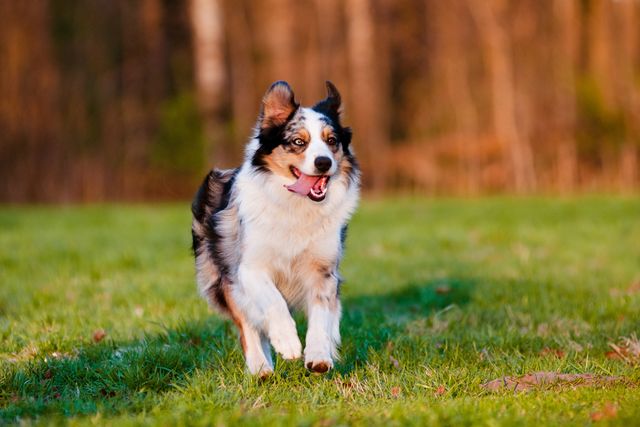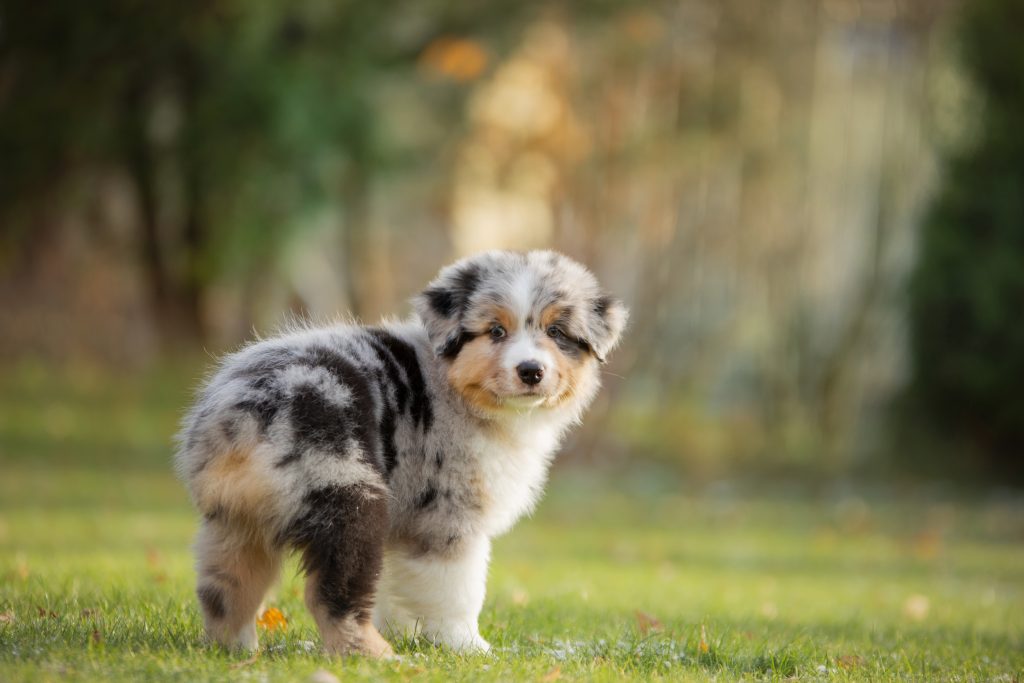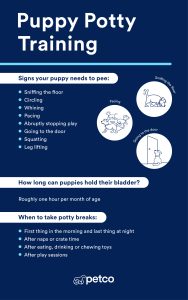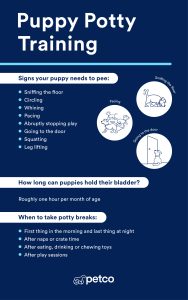Bringing an Aussie puppy into your home is exciting, but training can feel overwhelming. You want your furry friend to grow up happy, well-behaved, and full of energy.
The good news? With the right tips, you can make training easier and even fun for both of you. In this guide, you’ll discover simple, effective Aussie puppy training tips that will help you build a strong bond and shape your puppy’s behavior from day one.
Ready to unlock your pup’s potential and enjoy every moment together? Let’s dive in!

Credit: www.reddit.com
Choosing The Right Training Approach
Training a puppy needs patience and the right methods. Picking the best approach helps your puppy learn well.
Each dog learns differently. You should try ways that suit your puppy’s personality and your lifestyle.
Positive Reinforcement Techniques
Positive reinforcement means rewarding good behavior. This helps puppies want to repeat the action.
- Use treats your puppy loves
- Give lots of praise and petting
- Offer toys as rewards
- Keep training sessions short and fun
- Reward immediately after good behavior
Consistency And Routine
Consistency helps your puppy know what to expect. A daily routine makes learning easier and faster.
| Time | Activity |
| Morning | Potty break and short training |
| Afternoon | Playtime and socializing |
| Evening | Meal and calm training session |
| Night | Potty break and bedtime |
Setting Realistic Expectations
Puppies learn at their own speed. Expect mistakes and be patient with progress.
- Start with simple commands
- Keep training sessions short
- Celebrate small successes
- Do not punish mistakes
- Repeat exercises often
Essential Commands To Teach Early
Training your Aussie puppy early helps build good habits. Teaching simple commands keeps your dog safe and happy.
Focus on clear and consistent lessons. Use short sessions and positive rewards to keep your puppy interested.
Sit And Stay
“Sit” is one of the first commands your puppy should learn. It helps control your dog in busy places.
- Hold a treat close to your puppy’s nose.
- Move your hand up to make the puppy sit.
- Say “Sit” and give the treat when the puppy sits.
- Practice “Stay” by asking your puppy to remain seated.
- Step back slowly, then return and reward the puppy.
Come When Called
Teaching your puppy to come on command keeps them safe. Use a happy tone and reward every time they come.
- Start in a quiet area with no distractions.
- Kneel down and say your puppy’s name followed by “Come.”
- Reward your puppy with treats and praise when they come.
- Practice at longer distances as your puppy improves.
- Never call your puppy to scold them.
Leave It And Drop It
These commands stop your puppy from picking up dangerous items. They also help you control playtime better.
| Command | How to Teach | Goal |
|---|---|---|
| Leave It | Hold a treat in a closed hand. Say “Leave it.” Wait until your puppy stops trying. Reward with a different treat. | Ignore unwanted objects. |
| Drop It | Give a toy. Say “Drop it.” Show a treat. When puppy drops toy, give treat. | Release items safely. |
House Training Made Simple
Training your Aussie puppy to use the bathroom outside is key. It helps keep your home clean and your puppy happy.
Consistency and patience are your best tools. Let’s look at simple ways to make house training easier.
Establishing A Bathroom Schedule
Set regular times for your puppy to go outside. This helps them learn when it is time to relieve themselves.
- Take your puppy out first thing in the morning.
- Bring them outside after meals.
- Schedule breaks every two hours during the day.
- Go out just before bedtime.
- Watch for signs like sniffing or circling.
Crate Training Benefits
A crate can be a safe space for your puppy. It also helps with house training by teaching control.
| Benefit | Explanation |
| Prevents accidents | Puppies avoid soiling their sleeping area. |
| Creates routine | Helps puppies learn when to hold it. |
| Reduces anxiety | Gives a quiet place to relax. |
| Easy transport | Familiar space for travel or vet visits. |
Handling Accidents Calmly
Accidents happen. Stay calm and avoid punishment. This helps your puppy learn without fear.
Try these tips:
- Clean the area with an enzyme cleaner.
- Ignore the accident and do not shout.
- Take your puppy outside quickly after an accident.
- Praise your puppy when they go outside.
Socializing Your Aussie Puppy
Socializing helps your Aussie puppy grow into a friendly dog. It teaches them how to behave around others.
Start socializing early to build confidence and good manners. This makes life easier for both of you.
Introducing New People And Pets
Let your puppy meet different people calmly. This includes adults, children, and people with hats or glasses.
- Keep introductions short and positive
- Use treats to reward calm behavior
- Watch your puppy’s body language
- Allow your puppy to approach at their own pace
- Introduce new pets slowly and under supervision
Exposure To Different Environments
Take your Aussie puppy to many places. Different sounds, sights, and smells teach them about the world.
| Place | What to Watch For |
| Park | Other dogs, children playing |
| Busy Street | Cars, bikes, loud noises |
| Pet Store | New smells, animals, people |
| Friend’s Home | Different rooms and furniture |
Preventing Fear And Aggression
Help your puppy feel safe. Avoid forcing them into scary situations. Use calm voices and gentle touch.
- Give your puppy space to explore
- Stop play if your puppy shows fear signs
- Use praise for brave behavior
- Avoid punishment during socialization
- Seek help from a trainer if aggression appears
Managing Common Behavior Issues
Training your Aussie puppy helps prevent many behavior problems. Early guidance creates a happy dog and home.
Addressing issues like biting, chewing, and barking early keeps them from becoming habits.
Biting And Nipping Control
Puppies use their mouths to explore, but biting can hurt. Teach your pup gentle play early.
- Offer chew toys when your puppy tries to bite.
- Say “no” firmly and stop play if biting occurs.
- Praise your puppy when they lick or play softly.
- Redirect their attention to a toy or game.
Chewing And Destructive Habits
Chewing is natural but can damage your things. Give your puppy safe items to chew.
| Common Chewing Item | Solution |
| Shoes | Keep out of reach, provide chew toys |
| Furniture | Use bitter spray, supervise puppy |
| Wires | Hide wires, use protective covers |
Excessive Barking Solutions
Barking alerts and communicates. Too much barking can annoy family and neighbors.
Try these tips to reduce barking:
- Ignore barking to avoid rewarding it.
- Give enough exercise and mental challenges.
- Use commands like “quiet” and reward silence.
- Remove triggers if possible (like closing curtains).
Tools And Toys For Effective Training
Training your Aussie puppy can be fun and rewarding. Using the right tools and toys makes the process smooth and effective. In this guide, we explore essential items that can help with training.
From leashes and collars to treats and toys, each plays a key role in training. Let’s dive into choosing the right items for your furry friend.
Choosing The Right Leash And Collar
A proper leash and collar are crucial for safe and effective training. They help guide your puppy and keep them secure during walks.
- Choose a collar that fits snugly but not too tight.
- Pick a leash that is comfortable to hold.
- Consider a harness for added control.
Using Treats And Rewards
Treats are great motivators for puppies. They encourage good behavior and make learning fun. Use them wisely to reinforce positive actions.
| Type of Treat | Use |
| Small soft treats | Quick rewards during training |
| Chewy treats | Longer chewing sessions |
| Crunchy treats | Occasional rewards |
Interactive Toys To Keep Focus
Interactive toys keep your puppy engaged and focused. They provide mental stimulation and prevent boredom.
Consider puzzle toys that dispense treats as your puppy plays. These toys challenge your puppy and reward them for their efforts.
Maintaining Progress And Patience
Training your Aussie puppy is a journey. It requires time and patience. Keeping track of your progress is essential.
Being patient helps your puppy learn better. Encourage them and adjust your methods as needed.
Tracking Training Milestones
Set small goals for your puppy's training. Celebrate each milestone to keep motivation high.
- Recognize when your puppy follows a command for the first time
- Note improvements in behavior, such as sitting calmly
- Document changes in response time to commands
Adjusting Techniques Over Time
As your puppy grows, their needs change. Adapt your training techniques to suit their development.
| Age | Training Focus |
| 2-3 months | Basic commands |
| 4-5 months | Socialization |
| 6 months and older | Advanced skills |
Staying Patient And Encouraging
Puppies learn at their own pace. Stay patient and offer encouragement regularly.
Remember, your calm demeanor helps your puppy feel secure and confident.
)
Credit: lyka.com.au

Credit: lyka.com.au
Frequently Asked Questions
How Do I Start Training My Aussie Puppy?
Begin with basic commands like sit, stay, and come. Use positive reinforcement such as treats and praise. Keep sessions short and consistent. Start training early to build good habits and strengthen your bond with your Aussie puppy.
What Are The Best House Training Tips For Aussies?
Establish a regular potty schedule and take your puppy outside frequently. Praise and reward them immediately after they go. Use crate training to prevent accidents. Be patient and consistent, as Aussies learn quickly but need routine.
How Can I Socialize My Aussie Puppy Effectively?
Expose your puppy to different people, animals, and environments early. Arrange playdates and supervised interactions. Use positive reinforcement to create positive associations. Proper socialization helps your Aussie become confident, well-adjusted, and friendly.
What Are Common Aussie Puppy Training Mistakes To Avoid?
Avoid inconsistent commands and harsh punishments. Don’t skip socialization or exercise. Avoid long, boring training sessions. Consistency, patience, and positive reinforcement are key to effective training and a happy Aussie puppy.
Conclusion
Training your Aussie puppy takes patience and love. Keep sessions short and fun to hold their attention. Use clear commands and reward good behavior every time. Consistency helps your puppy learn faster and feel secure. Remember, each pup learns at its own pace.
Enjoy the process and build a strong bond. Training today means a happy, well-behaved dog tomorrow. Stay calm and positive, and your Aussie will thrive.

Emily Barker is the founder of ChillDogLife.com, a space dedicated to helping pup parents discover the best dog products, lifestyle tips, and cozy ideas for happier homes.
A lifelong dog lover, Emily combines her passion for pets with a knack for research to share trusted recommendations on everything from toys and furniture to health and everyday care.
Her goal is simple: to make life easier, stylish, and more joyful for dogs and the people who love them.







